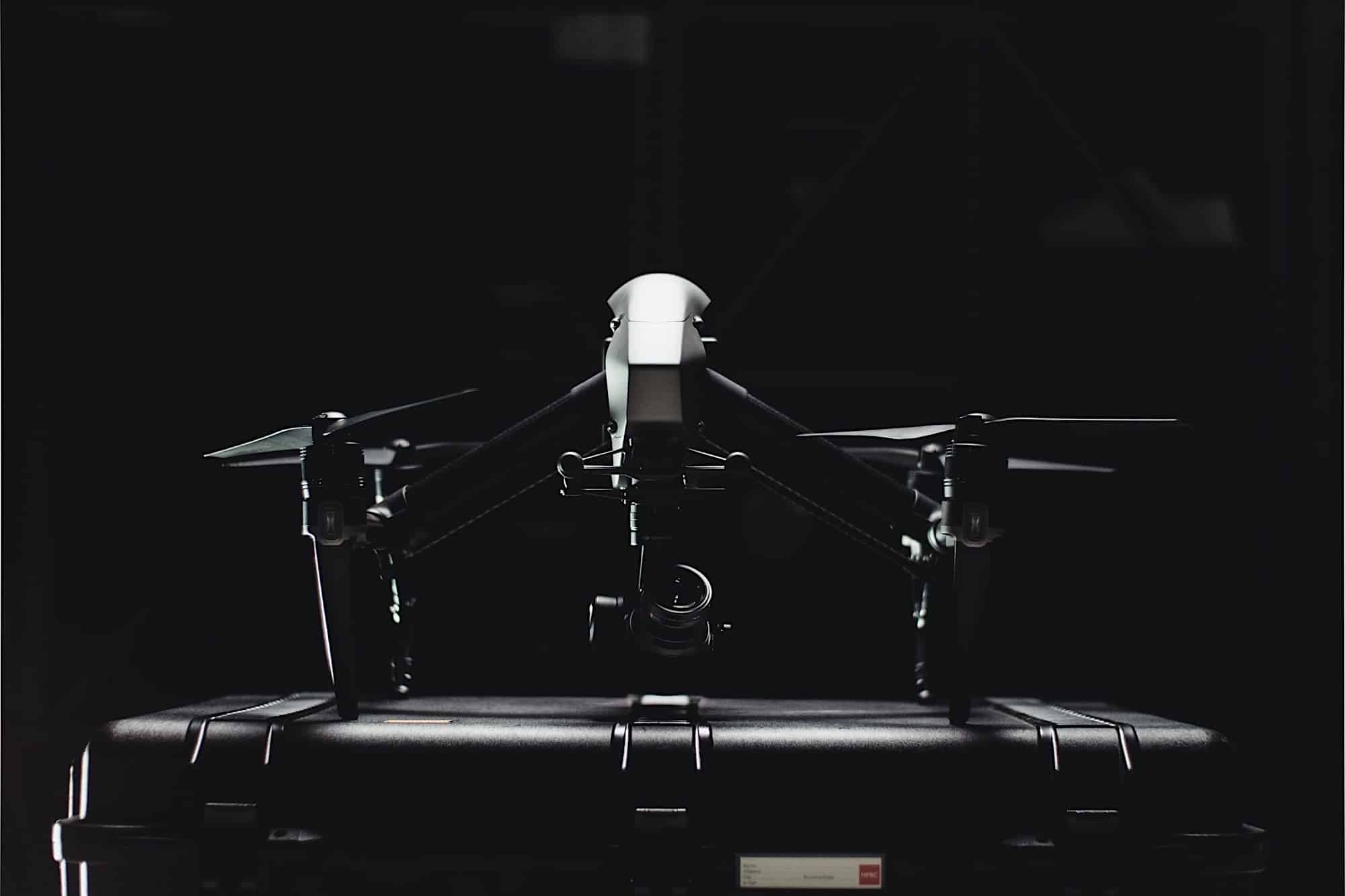A Guide for professionals responsible for introducing drone services into their enterprise!
Companies have a lot of options when it comes to drones and may be tempted to pursue multiple applications. But these are not just fun toys—they often require big investments, and they need to be fully integrated into work processes to produce a significant impact. That’s why a winning approach often involves focusing on a limited number of applications that solve critical problems or deliver a real bottom-line impact.
McKinsey & Company
Whether it’s using a drone for blood delivery to remote locations in Africa or for conducting aerial inspections in hazardous areas, simple aerial photography, or a myriad of other drone-enabled capabilities, enterprises are discovering that drone services are valuable.
Increasingly, it’s no longer a question of “if,” but a matter of “when” and “how” to adopt drone services.
In the decision to adopt these exciting new powerful capabilities, every institution will have a choice to work with an external partner, such as drone service providers, or to do it in-house.
Drones or Unmanned Aerial Vehicles (UAV) are aircraft but available at dramatically lower hardware cost. Thus, the services enabled by drones, like the aviation industry, will probably gravitate to a primarily outsourced solution (e.g., commercial carriers, shared executive jets), with a select few in-house operations (e.g., military, company-owned aircraft).
Given the newness of the drone services sector, the pace of innovation in drone technology, and the limited availability of capable drone service providers as partners, many enterprises choose to develop prototype drone-enabled services internally.
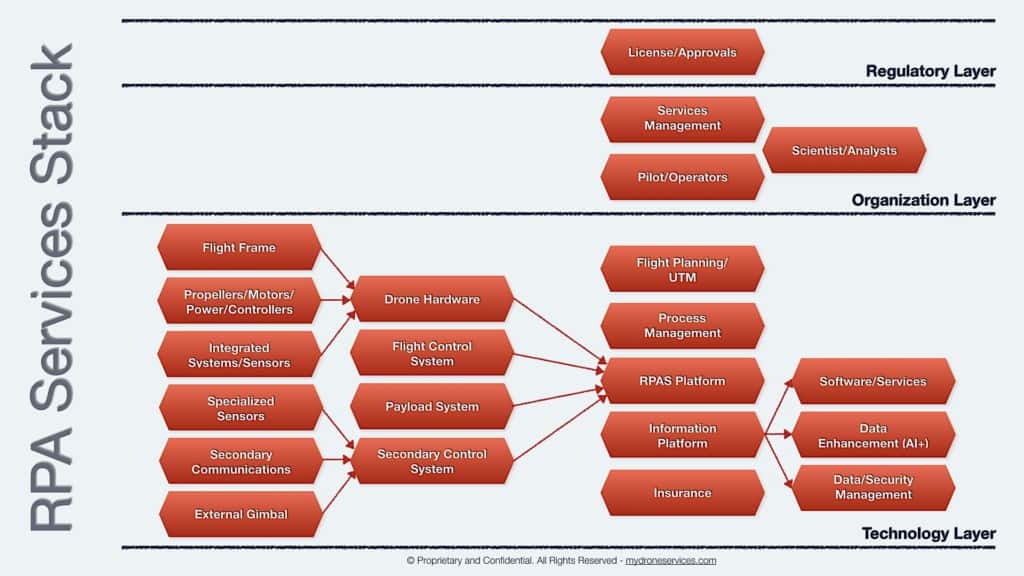
This document is a guide or toolkit for enterprises that are considering building their remote-piloted aerial services capability.
Every remote-piloted aerial service capability will require an RPA Services Stack. And every stack has three layers – regulatory, organizational, and technology. The limitations and design choices made in each layer affect the sustainability and effectiveness of the overall stack.
In this document, we help you navigate each layer and the critical choices you must make.
The Regulatory Layer of a Remote Piloted Aerial Services Stack
Flying a drone for your business is a commercially regulated activity.
The Federal Aviation Administration (FAA) distinguishes hobbyists or public use aerial drone operations and commercial drone activity and has specific regulations for each.
A flight will only qualify as an authorized hobbyist flight if flown solely for hobby or recreational use.
If you have an employee who has flown drones as a hobby, perhaps for drone photography, they can’t just fly a drone for you without following the commercial drone regulations.
Hobbyists cannot fly an Unmanned Aerial System (UAS) to benefit their company and consider the flight as operating under the hobbyist umbrella.
Any hobbyist who operates a UAS to benefit a company is engaging in commercial drone activity.
It is commercial drone operations, even if you don’t pay the drone operators for that drone flight.
The FAA has separate regulations governing commercial drone operations.
Companies should not operate a drone without complying with the applicable regulations and authorizations.
Non-compliant drone operations create significant potential legal liability for both the operator and the company for which they are flying.
To get started with commercial drone operations, you must fly your UAS under the command of a qualified and appropriately licensed commercial UAV pilot (more in the organization layer below).
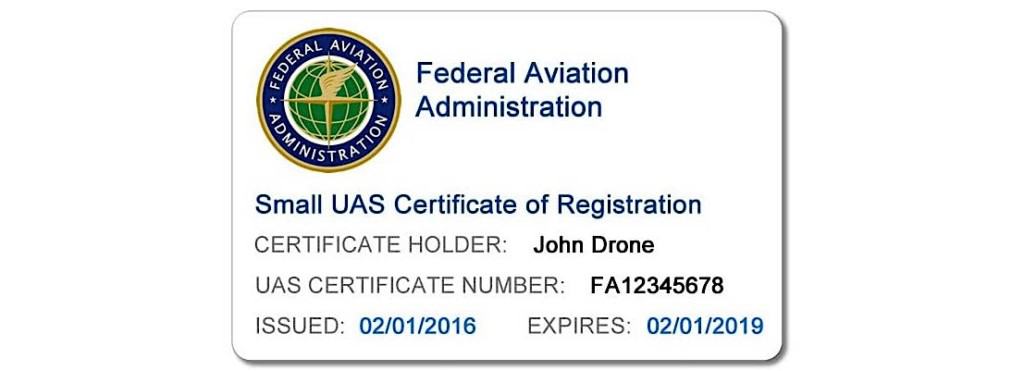
What registrations are required to fly a drone commercially?
Companies operating drones must comply with the FAA civil or commercial UAS regulations.
The FAA imposes numerous additional certifications and operating restrictions on commercial UAS operations.
The FAA opened a new online registration system for commercial drone operators on March 31, 2016.
Here is a list of the critical registration requirements for commercial drone operations:
- Commercial drone owners must register each UAV and remit a $5 registration fee. The UAV registration is valid for three years, with a $5 renewal fee.
- During the registration, the commercial drone owner must provide UAV-specific information and some necessary contact information.
- The UAV owner receives a single online user profile to which they can add numerous UAV registrations.
- The owner receives a Certificate of Aircraft Registration with a unique registration number for each UAV they register.
- Mark the registration number on the drone before flying.
- The drone can be marked using a permanent marker, label, or engraving and must be found on the unmanned aircraft during routine handling and in all operating conditions.
- The marking must be readily accessible and legible upon close visual inspection. It may also be marked or enclosed in a readily accessible compartment, such as a battery compartment.
- UAS owners must be US citizens for registration.
- Exceptions allow for UAS owned by non-U.S. citizen corporations to register their UAVs. Such corporations, organized and doing business under the laws of the US or a State, are eligible. The UAS must be “based and primarily used in” the US, and the FAA has established strict guidelines to meet the “based and primarily used in” test.
- If a UAV is destroyed, sold, lost, or transferred, the UAV owner must cancel the registration for that UAV using the FAA’s online registration system.
What regulations generally govern commercial drone operations?
FAA Part 107 is the regulation that broadly authorizes low-risk commercial Small Unmanned Aerial System (SUAS) operations in the United States.
Part 107 rule contains necessary operating restrictions to maintain the safety of the National Air Space and ensure that SUAS does not threaten national security.
The most critical operational restrictions in Part 107 are summarized here:
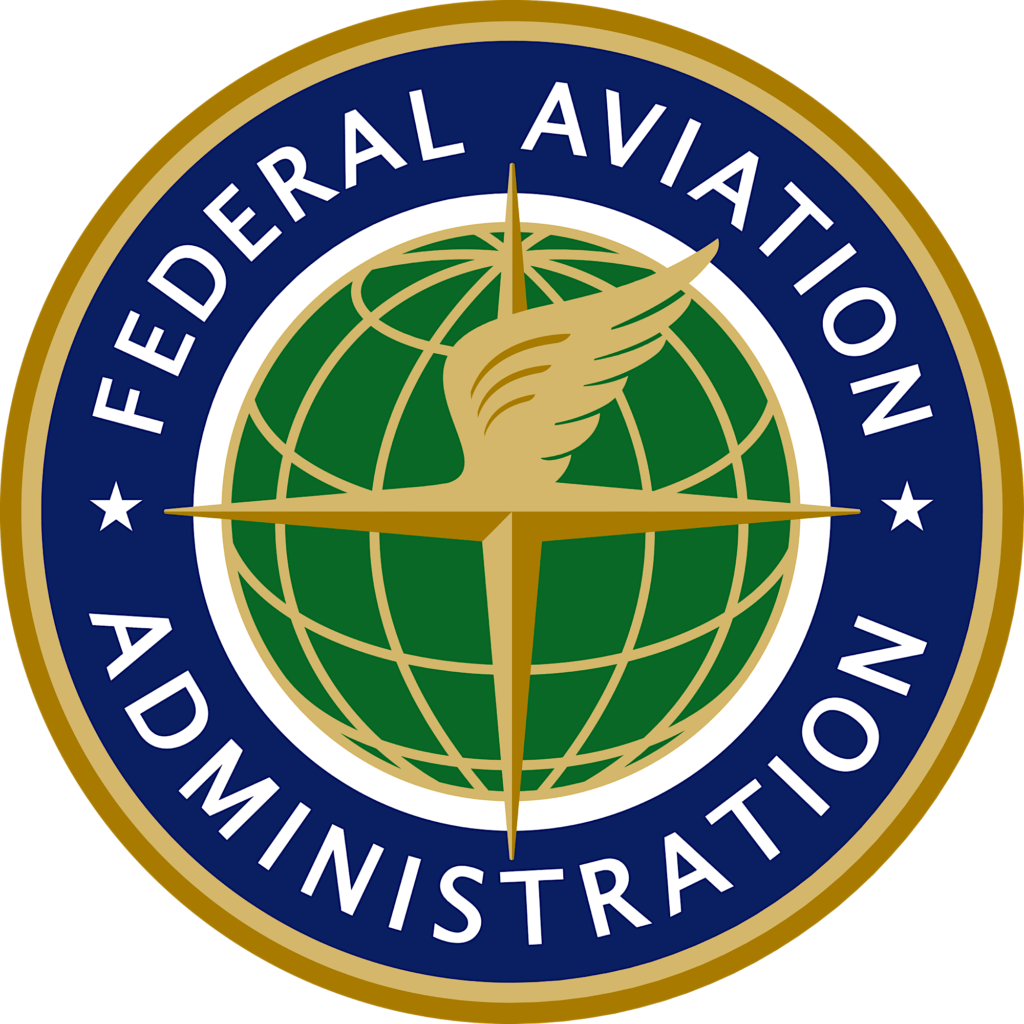
- The remotely piloted aircraft and its payload must weigh less than 55 lbs. (25 kg).
- The UAS must operate within a visual line of sight (VLOS) of the remote pilot in charge and a visual observer (if used). The remote pilot or visual observer must see the aircraft without using any device other than corrective lenses.
- An observer is not required but can be used to supplement or enhance situational awareness during the UAS operation.
- The remote Pilot In Charge is the person manipulating the controls, or an Observer is limited to one remote pilot aerial system operation at a time.
- The UAS must operate during daylight hours determined by the official sunrise to official sunset at local time. If the small UAS has lighted anti-collision lights, then it can be flown during twilight.
- Drone operators must yield the right-of-way to other aircraft.
- The UAV must not fly over anyone who is not directly involved in the operation (meaning that the drone can only operate over people who are members of the UAS flight crew, i.e., drone pilots, drone operators, mission observers, or direct participants).
- Do not operate the UAS from a moving aircraft.
- The UAV may operate from a moving vehicle (land or water-borne) if flown over a sparsely populated area. The drone, in this case, must not be carrying another person’s property. Conversely, do not operate the UAS from a moving land or water-borne vehicle over well-populated areas.
- The maximum airspeed allowed for UAV operations is 100 mph (87 knots).
- The maximum altitude allowed for UAV operations is 400 feet above ground level. If flown within a 400-foot radius of a structure, the UAV cannot operate higher than 400 feet above the top of that structure.
- Drone operations require minimum weather visibility 3 statute miles from the ground control station.
- UAV operations are prohibited in Class A (18,000 feet and above) airspace.
- UAV Operations are allowed in Class B, C, D, and E airspaces with Air Traffic Control (ATC) permission, as evidenced by an airspace authorization. Requests for airspace authorizations are submitted using the FAA’s online portal or one of the other tools approved by the FAA.
- UAV Operations in Class G airspace are allowed without ATC permission.
- Drone operators must not fly the UAS carelessly or recklessly.
What should you do if your drone operations requirement exceeds the standard Part 107 regulations?
The FAA anticipated that the rules established under Part 107 would be restrictive and limit the adoption of new innovative applications and drone services.
To facilitate new approaches and uses of drones, the FAA incorporated a waiver process that grants permission to operate beyond the scope of the current rule.
The FAA essentially identified areas where the rules could be waived and created a process by which one can apply to the FAA for authorization of the waiver.
Listed here are the areas the FAA identified as eligible for a waiver and the subsection of the rule governing that waiver:
- Operating from a moving vehicle or aircraft (§ 107.25)
- Operations beyond Daylight (§ 107.29)
- Beyond Visual line of sight aircraft operation (§ 107.31)
- Visual observer (§ 107.33)
- Operating multiple SUAS (§ 107.35
- Yielding to the right of way (§ 107.37(a))
- Operating over people (§ 107.39)
- Operating in certain airspace (§ 107.41)
- Operating limitations for SUAS (§ 107.51)
To qualify for a waiver, you must demonstrate or convince the FAA that your proposed drone operations are safe or can avoid safety concerns.
The FAA evaluates every waiver application separately and on a case-by-case basis.
The FAA will consider many factors in deciding to issue a waiver.
Considerations include the specific type and nature of your proposed drone operations, where the drones will operate in the particular environment around such activities, and, most importantly, your proposed safety mitigations.
What is the FAA’s history regarding issuing waivers?
Experience suggests that the FAA will provide waivers to allow drone operations beyond the standard Part 107 limitations.
As of March 25, 2020, the FAA has issued 3,983 waivers. The number represents a near doubling of the 2,037 waivers detailed on September 10, 2018, the vast majority of which are waivers to permit drone operations at night (1,867 waivers).
The remaining waivers granted by 2018 include:
- 106 to conduct operations in regulated airspace
- 37 waivers allowing a single remote pilot to operate multiple UAS simultaneously
- 22 waivers authorizing drone operations beyond visual line of sight (BVLOS)
- 28 from visibility and cloud minimum operating limitations
- 13 cases relating to visual observer requirements
- 13 waivers allowing flights over people
- Four waivers authorizing UAS operations from a moving vehicle in a non-sparsely populated area
That said, the process for getting a waiver authorization from the FAA is not trivial and requires significant evidence of the ability to operate safely and commitment to rigorously following authorized guidelines.
You should note that concerning specific critical infrastructure, the Act provides for expanded drone operations, including beyond the visual line of sight during both days or at night.
Critical infrastructure, for purposes of this section, is defined to include pipelines and oil or gas production, refining, or processing facilities, among others.
The critical infrastructure exemption eases some of the regulatory burdens for owners and operators of natural gas and oil pipelines, as well as other critical infrastructure. It authorizes vital infrastructure operators to use UAS to conduct any activity already permissible with crewed aircraft.
How can you get a waiver to operate your drone beyond the standard regulations?
Waiver applications begin with registration and then submitting the applicable documents at the FAA DroneZone portal.
Go here to find The FAA’s instructions for filing a waiver application.
The waiver application form itself only requires applicants to submit the necessary information about the proposed operations (including the type of waiver requested and applicant contact information, among others).
You can access the FAA Waiver Safety Guideline Questions, which describe the information you should consider and what is needed to make a successful safety case for granting a waiver.
Some of the questions apply to all waiver types, including the necessary operational details, UAS details, and pilot/personnel details.
There are also specific questions that vary based on the type of waiver requested. You should expect that the level of detail and the additional supporting documents that you provide sufficient for appropriately responding to the FAA will vary depending on the complexity of the proposed operation.
The key to achieving this waiver is the focus we place on safety, on decreasing risk in our operations, and in developing pilots that have the knowledge and experience for the next generation of unmanned aircraft advancement.
Dr. Will Austin, President – WCCC
The riskier your proposed operation, the more substance your responses and safety case will need to provide for the FAA to grant you the waiver.
After submitting your waiver application, you will receive an email confirmation with a tracking number.
After completing the waiver request form, you have the option of attaching up to five additional PDF files to the waiver application. Submit these to the FAA via email at 9-afs-800-part107Waivers@faa.gov.
We recommend that you mark documents that you wish to protect, such as commercially sensitive information, on every page of every document you submit as “Proprietary and Confidential.”
This marking will help protect sensitive data in your documents from being released publicly in response to a Freedom of Information Act (FOIA) request anyone can file with the FAA.
You should use the waiver tracking number in all correspondence with the FAA regarding that application.
What other drone issues should concern business leaders?
There is a significant worry among business leaders that unlicensed individuals will fly UAS over their facilities without permission, violating federal, state, or local laws (referred to as “rogue” drones).
For example, a “rogue” could fly a UAV to survey, collect video, or photograph facilities, personnel, or sensitive areas within those facilities.
Environmental groups could use drones or use information captured by a hobbyist’s drone in legal undertakings.
A “terrorist” could arm a drone with explosives and fly it into essential critical infrastructure.
Less threatening but more likely a hobbyist could accidentally crash a UAS into a refinery, petrochemical, or other industrial facilities.
In October 2015, a hobbyist crashed his UAS onto the White House lawn. More recently, another crashed into the Seattle Space Needle.
Under FAA rules, refineries, petrochemicals, and other sensitive facilities are covered by the FAAs Notice to Airmen Advisory 4/0811. The advisory does not prohibit flight over the sensitive facility but says instead: “Pilots are strongly advised to avoid the airspace above or in proximity to such sites as… refineries, industrial complexes… and other similar facilities… Pilots should not circle as to loiter in the vicinity over these types of facilities.”
If you have security concerns, you can join other private entities working with the FAA to establish flight restrictions over certain lands.
For example, UAVs are not allowed from the surface up to 3,000 feet in the airspace over Disney theme parks.
More recently, some private entities, like ski resorts, have enacted policies restricting UAS without involving the FAA.
You should know that such policies, particularly as they relate to UAS that are launched or operated from outside the property boundaries, remain unresolved legally. Do private entities have the right to limit the use of low-altitude airspace over their land, or are the limitations strictly under the responsibility of the FAA? Stay tuned.

What should a company do if an unauthorized UAS has, is, or will be flying over their property?
The FAA considers both commercial and hobbyist UAS as aircraft. The FAA would, therefore, find any attempt to interfere with any aircraft, which includes a SUAS, a felony.
The FCC regulates communications and would consider any attempt to interfere with electronic communications a felony. Thus, you should not attempt to jam or otherwise interfere with SUAS communication.
In simple terms, it is never appropriate to attempt to shoot down, interfere with, or capture a rogue UAV, even if it is operating over your property without permission.
Growing privacy and security concerns over inappropriate drone use have prompted the development of several counter-UAS systems that can detect, identify, and then track rogue drones.
Some of these systems can mitigate the threat by interfering with communications, hacking, capturing, or even destroying rogue drones.
Before you deploy any UAS countermeasures or interfering technology, you should understand the legal and regulatory risks.
Generally, you can detect, identify, and track rogue drones under the law. You may provide that information to the FAA or law enforcement. However, you may not otherwise interfere with the UAS operation, even if you believe the UAV is flown in violation of FAA rules illegally.
The Act, which gives the FAA control of SUAS, also establishes a process to allow owners and operators of critical infrastructure to petition the FAA Administrator to prohibit or limit the operation of SUAS near restricted facilities.
If you are an operator or the owner of critical infrastructures, such as energy exploration, production, transmission, transport, storage and distribution facilities and equipment, oil refineries and chemical facilities, amusement parks, and other locations, you can apply to the FAA for such restriction.

The Organization Layer of a Remote Piloted Aerial Services Stack
Evident from the regulatory layer are the following drone-specific organizational requirements:
- You must fly your UAS under the command of qualified and appropriately licensed commercial drone pilots.
- An observer is not required but can be used to supplement or enhance situational awareness during the UAS operation.
- The remote Pilot In Charge is the person manipulating the controls, or an Observer is limited to one remote pilot aerial system operation at a time.
How to become a drone pilot, or in other words, how does one get a commercial drone license?
The FAA rules assume that in a UAS operation, there could be three potential types of personnel involved. There must be a remote pilot-in-command (remote PIC), there may be another person manipulating the flight controls, and there could also be a visual observer.
The two optional personnel are not required to possess a pilot certificate of any kind. That is, the FAA does not certify the observers or the person manipulating the controls of the UAS.
Your remote PIC (drone pilot) must obtain a Remote Pilot Certificate with a small UAS rating from the FAA to fly your drone commercially.
The RPC certificate confirms that drone pilots understand the regulations, operating requirements, and procedures for safely flying and operating commercial drones.
The FAA rule (Part 107) does not require that drone pilots have actual flight training, take any practical examinations, or receive a separate medical certification to receive a remote pilot certificate.
However, we find that candidates are much better prepared for the examination and the realities of practical drone operations when they have some prior flight training and practice.
You are eligible to become a drone pilot if you are:
- At least 16 years old
- Able to write, speak, read, and understand English
- In a mental and physical condition to safely fly a drone
To receive your Remote Pilot Certificate, you must pass the FAA’s initial aeronautical knowledge exam.
The examination covers a broad set of topics related to air safety, including:
- Applicable regulations relating to SUAS rating privileges, limitations, and flight operation
- Airspace classification and operating requirements and flight restrictions affecting SUAS operations
- Aviation Weather Sources and effects of weather on small unmanned aircraft performance
- UAV loading and performance
- Emergency procedures
- Crew resource management
- Radio communication procedures
- Determining the performance of small unmanned aircraft
- Physiological effects of drugs and alcohol
- Aeronautical decision-making and judgment
- Airport operations
- Maintenance and preflight inspection procedures
The FAA requires specific steps to register before the exam, to take the exam, and to follow after you have passed the initial aeronautical knowledge exam. Follow the steps on the FAA guide to becoming a commercial drone pilot here: FAA Become a Drone Pilot.
The license is valid for two years, and certificate holders must pass a recurrent knowledge test every two years to stay current.
Finally, the license holder must have proof of their license during all UAS operations.
Can someone who does not have a commercial drone license fly the sUAS?
The Pilot In Charge must be licensed and is responsible for the sUAS flight operation.
The PIC is typically the person manipulating the flight controls, but FAA regulations allow for non-licensed persons to operate the flight controls.
In those cases, a remote PIC must directly supervise the person manipulating the flight controls, and the remote PIC must always be able to take direct control of the sUAS on demand. The PIC must be able to quickly take control to address any hazardous situation before an accident occurs.
The most obvious solution to the quick takeover ability of the remote PIC occurs when the PIC and the person manipulating the controls are physically next to each other.
Other solutions for quick takeover include a dual control station system (one for the PIC and another for the person flying the drone) or an autonomous pre-programmed “safe mode,” which allows the PIC to force the drone to return home or hover safely, as required.
Enterprises may also seek approvals (waivers) to operate the sUAS autonomously.
The autonomous operation generally requires remote drone pilots to develop a flight plan, which is sent to the autopilot onboard the small UA. During such automated flight, components on the aircraft will manipulate the flight controls. In these cases, the onboard auto-pilot will operate the sUAS safely, even if there is no link to the remote PIC.
Despite the ability to fly autonomously on auto-pilot, the FAA requires the ability for the remote PIC to force the aircraft to land or change altitude/route on demand.

What is a visual observer, and do you need one?
A visual observer is an optional addition to your drone flight team.
Because the visual observer role is optional, there are no mandatory qualifications established.
Drone service teams choose to include visual observer teammates to enhance and supplement situational awareness.
In simple terms, a visual observer extends the capabilities of the pilot in charge or the person in command of the flight controls. They are there to enhance the safety of the flight mission.
You can add a visual observer to your drone flight team for various reasons.
For example, in applying for a waiver to fly the sUAS beyond the visible line of sight of the pilot in command, you must convince the FAA that you can continue to operate safely.
In that situation, you can develop an operating procedure with an observer communicating with the PIC. You can then locate the observer such that while the drone is not visible to the PIC, it is still visible to the observer.
The FAA requires that the PIC or person manipulating the controls coordinate with any visual observer to scan the operating location for any potential collision hazard and to maintain visual awareness of the drone’s location through direct observation.
Finally, using a visual observer requires an effective communication method between the PIC and the observer.
The communication method must not be distracting, must make it easy for the parties to understand each other, and be reliable.
Hand-held radios or other electronic communication devices are allowed.
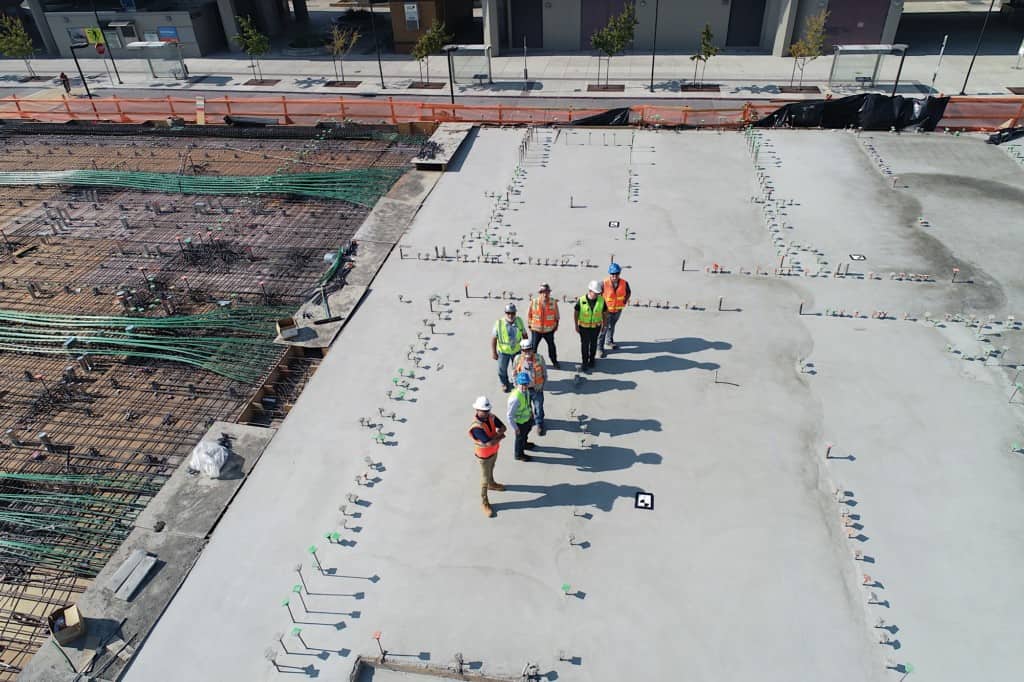
Besides a PIC or observer, what other roles are needed to deliver drone services?
A PIC is mandatory, and an observer is optional for each flight mission. Based on the mission frequency, enterprises will decide how many are required and whether they are full-time, part-time, or subcontracted roles.
Similarly, the nature and frequency of the mission could create numerous other roles. Indeed, there will be significant roles driven by the technology stack described below. Here are some of the different essential organization roles necessary to effectively deliver drone services:
- Dispatch. In small or straightforward operations, a PIC will probably perform the dispatch function. However, as soon as you have multiple sUAS operational, you will need a dispatcher to manage the communications and scheduling of RPA service teams.
- Flight clearance. A PIC will perform this role in the early stages of your services program, but as your operations increase in complexity will not be shifted. The shift to a dedicated flight clearance role is necessary in cases where you are conducting multiple flights near or in a restricted area, such as an airport.
- sUAS Crew. A Pilot is mandatory, and an observer is an optional member of your sUAS crew. The nature of the mission may require additional crew members assigned to the team. For example, drone spraying services may need a resource to fill or refill sprayers, change batteries, and prepare the system before/after each flight. High-end videographers will choose to have a dedicated camera operator who is responsible for framing and capturing the specific shots. The more complex the mission, the more likely the need to create other specialized sUAS crew roles.
- Platform development/management. RPA Platforms, detailed below, range from sublimely simple off-the-shelf commercial solutions to incredibly complex integrated solutions. The more complicated and unique the solution, the more likely you will need specialists to balance all the trade-offs in putting the right platform in place.
- Systems Development/management. The vast majority of drone services will entail aerial data collection and analysis of this drone data. Thus, a very critical component of every service solution will be the information management aspect. For simple programs, you may be able to use off-the-shelf data processing solutions, but even in those cases, scaling will require robust integration and data security protocols. For every large-scale drone service, expect multiple resources focused on the administration and management of data flow, storage, analysis, visualization, and security systems.
- Data Scientist/Analysts. To date, many drone services have entailed a real-time observation of aerial images and drone videos, such as in surveillance or search missions. However, programs must scale, and data analysis must become more precisely focused. There will be a need for more machine-based visual analysis, artificial intelligence, and the ability to comb through incredibly large image and video data pools to identify specific issues. Machines and people with the appropriate data analysis skills will be necessary to take aerial images collected of bridges or solar panels to determine which areas need further examination. With scale, expect multiple data analysts or scientists to deliver your drone service.
- RPA platform maintenance. Drones are aircraft, and aircraft must be maintained to operate safely. Every RPA platform has several components that are mission-critical, for which failure could be catastrophic. Propellers, controllers, motors, propulsion systems, and frames usage must be tracked, maintained, and replacements made pro-actively. Every RPA service team must include a maintenance solution.
- Compliance. Drone services are commercial activity and are regulated. Thus a compliance posture and organization is a necessity to operate successfully and safely. Plan to have compliance resources right from the start. The only option you have is when to make these dedicated versus shared resources.
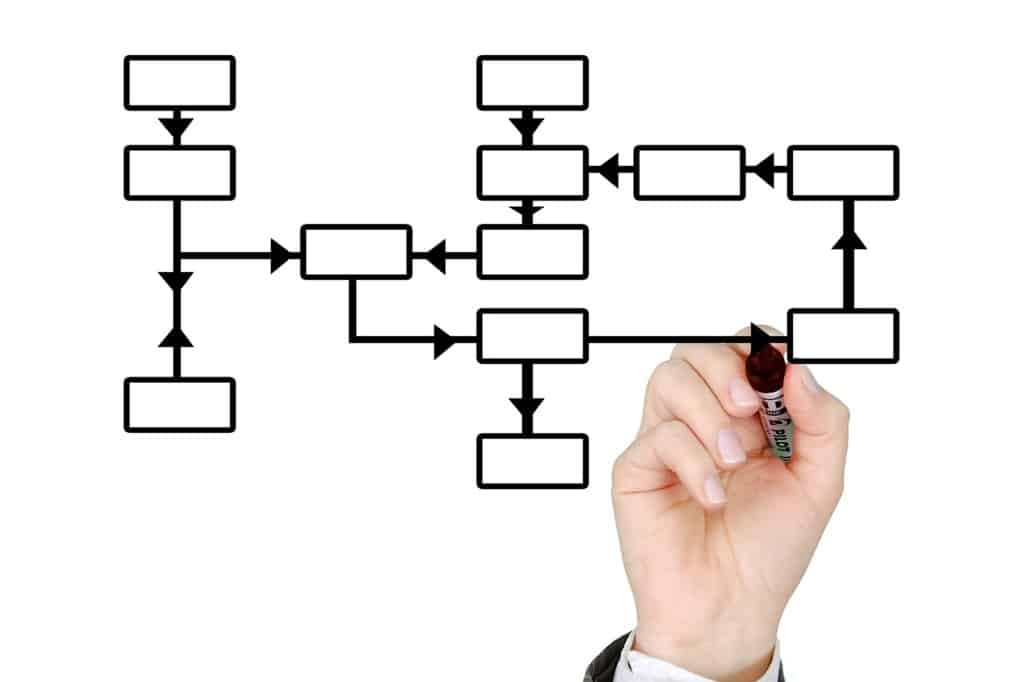
The Technology Layer of a Remote Piloted Aerial Services Stack
At the technology layer, you have several critical decisions to make. You will have to:
- Select your Remote Piloted Aerial System Platform. This decision is often incorrectly referred to as the drone selection, but as you will see shortly, it’s far more complicated than that.
- Choose or build your information platform. This information choice is an equally important consideration as the RPAS Platform above. Indeed, the options are much more contingent and iterative in nature than individual selections.
- Decide how to manage your process. A process management solution is critical for any RPA service operating at scale and sustainably.
- Select and put in place a flight planning/UTM solution.
- Ensure that your operation is adequately insured.
We will expand on each of these five necessary components of sustainable RPA services stack below.
The drone services industry emerged from entrepreneurs using off-the-shelf drones designed primarily for photography or aerial video.
Off-the-shelf drone technology was easily accessible but came with a proprietary operating system, pre-selected hardware choices, built-in flight control, payload, sensor, and rudimentary information systems.
Their advantage was availability and relative affordability, plus many amateur drone pilots who were familiar with their operation.
While these “amateur” drones performed beautifully for photography enthusiasts collecting aerial photos, drone video, or those operations that fit within their design limits, they were inherently limiting, inflexible, and difficult to integrate. They did not work so well for industrial inspection in hazardous locations, for surveyors looking to build detailed orthomosaic maps, or for the more sophisticated project needs of drone companies.
Inevitably, other entrepreneurs stepped into the breach, offering unbundled pieces that are combined to build a more seamless and finely tuned solution. The new drone business focuses on professional drone services, and technology requirements have made it easier to develop and optimize aerial drone services and find capable drone service providers.
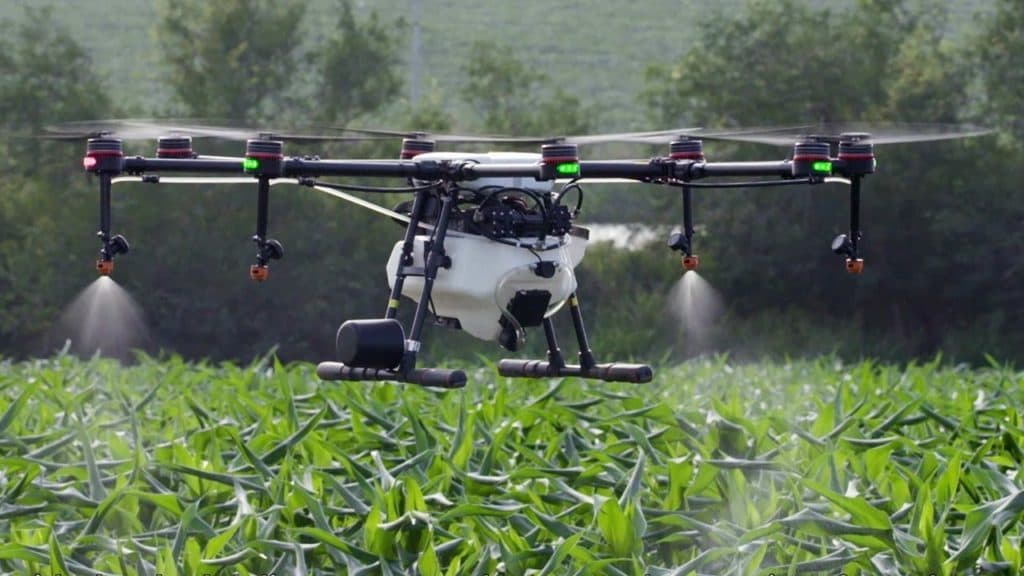
RPAS Platform
As we described earlier, the RPA Platform decision is contingent and integral to the information platform decision. Although we discuss each separately, consider them simultaneously to reach an optimal solution.
The starting point for most drone services platform designs likely begins with specifying what data will be collected or used from the drone service mission. Are you interested in inspections, collecting aerial imagery, collecting aerial data, or more complex, specialized pools of measurements?
Several significant implications will emerge from that specification:
- What sensors will be required?
- How far must the drone fly?
- How long must the drone stay airborne?
Answers to those questions will begin to narrow down the choice of the type of platform one should consider.
We are running into a problem: the product wasn’t designed to meet their needs. We are being judged by decision-makers, professionals, policymakers and others who want the product to be meeting their requirements. We are a consumer company.
Mario Rebello, DJI Regional Manager
Professional drones are not consumer drones.
Pilots who are in the business of delivering professional drone services have very different needs than consumers for the kinds of drone solutions deployed in commercial applications.
A Professional drone must be more durable, flexible, precise, reliable, and supportable and have lower lifecycle operating costs.
Every commercial drone hardware solution comes pre-packaged with a flight frame, propellers, motors, controllers, power systems, several integrated sensors (such as GPS), and systems. They will often include their flight system and payload system.
However, the rapidly increasing need for sophisticated specialized sensors, communications, and external gimbals has driven the need for secondary control systems, which can be integrated into and work with drone hardware and systems.
First critical RPA Service Platform decision – commonly integrated or specialized secondary sensor?
The range of sensor capabilities is among the fastest-growing of the RPA subsystem choices. Some examples of the currently available options include:
- Still cameras, including DSLRs
- HD and 4K Video recorders
- Specialized cinematography cameras
- Electro-Optical/Infra-Red Systems
- Thermal Imaging Visualizers
- LIDAR detectors
- Gas Sniffers
- Bio-hazard detectors
The reality is that drone hardware solutions cannot accommodate all sensor types. Commercial drone hardware choices are a delicate balance of pieces that fit together to satisfy the most common use cases. As soon as you step out of the integrated sensor options to a more specialized requirement, you must then factor in the work necessary to integrate any additional requirements for dedicated communications or even a gimbal to carry and position your sensor safely.
Second critical RPA Service Platform decision – open source or proprietary?
Proprietary drone operating systems, including payload and flight control, are difficult to integrate with and create a level of inherent supply risk that enterprises may not wish to embrace.
In the early PC days, this would be akin to choosing between the Atari, Osborne, Apple, and Microsoft operating systems.
Thus the emergence of several robust open-source control systems such as Dronecode, PX4, and many others.
Choose carefully because your entire stack will hinge on this selection!
Third critical RPA Service Platform decision – tethered or free-flight?
Tethered drones are the right solution for persistent coverage over a small geographic area.
Tethered drones are any drone physically connected to a power station on the ground. Tethered drones dramatically reduce technical and human error crashes in flight.
A tethered drone has a reduced spatial area where it can fly. Because of the flying restrictions the tether creates, their operation does not require a trained pilot. It also does not require GPS navigation, which significantly contributes to reducing any technical errors that lead to drones crashing.
Most tethered drones have an unlimited flight time and can stay afloat until a problem occurs.
However, as stated earlier, the tethered drone can only operate in a limited area (where the tether allows). Thus, any service range beyond the tethered flight limits requires a free-flying drone.
Fourth critical RPA Service Platform decision – fixed-wing or multi-rotor?
Until recently, if you wanted to cover a long distance, your only choice was a fixed-wing drone. Recent developments have made a decision much more nuanced. To maneuver through the selection of fixed-wing versus multi-rotor choice, it is helpful for a small review of their differences.
Multi-rotor drones use multiple independently controlled rotors, affording incredible maneuverability to fly precisely within a three-dimensional space – up, down, left, right, and any combination. They can also hover over a fixed location.
The fixed-wing drone, on the other hand, looks and flies like a traditional aircraft. Because of the inherent lower maneuverability, fixed-wing drones are more suitable for long-distance flying. Keep in mind that also because of their design, fixed-wings tend to carry a smaller payload weight, so if you need a more substantial specialized sensor, you may be limited to using a multi-rotor platform.
A multi-rotor drone model is the better choice, for example, if you are flying drone mapping operations and plan to map small areas, make 3D models of structures, or even conduct industrial inspections that require hovering or maneuvering up and around infrastructure.
If, instead, you are mapping larger areas (hundreds or thousands of acres at a time) or flying long, mostly straight-line, or linear flight plans such as flights over pipelines or roadways, you may want to consider a fixed-wing drone.
Innovations in propulsion systems are creating hybrid multi-rotor drones that can fly significantly longer and further. However, these fuel-cell-based or gas-powered drone systems are considerably more expensive than the traditional battery-based multi-rotor.
One thing to remember for all long-distance flights: If you are flying your drone beyond a point where the pilot or observer can see the craft, you will also need a BVLOS waiver for that operation, regardless of your platform choice.

Information Platform
Will you be collecting and manipulating data in real-time while the drone is in flight?
Or will you analyze the data after completing the flight and offloading the data?
Is the data collected subject to regulations limiting where it can be shared or accessed? For example, in some jurisdictions, the handling of imagery of national infrastructures, such as an oil facility, is regulated.
Must communications be persistent? Secure?
What analysis will you perform on the collected data?
How will the insights from the collected data be disseminated and consumed?
Answers to these and various other details will inform the design of your idealized information platform.
Keep in mind that your information platform will be connecting to and sharing data with a variety of sources and recipients. Plan and design accordingly!
With today’s drones you get connectivity, you get the cloud, and if you architect your system correctly, the drone is just an extension of the Internet.”
Chris Anderson, Founder & CEO – 3D Robotics
“It’s almost like we forget about the drone. Now, we are just connecting a sensor to the cloud and that sensor’s in the air. It’s below the satellites and above street view.
Process Management
Planning for a drone flight, conducting that flight, managing the information collected, and maintaining the entire operation require a robust process management solution.
For a small team performing a single flight at a time, much of that process can be accomplished by the PIC and sUAS crew. However, scaling and increasing complexity drive a significant dependency on fragmented processes and good seamless handoffs to ensure nothing falls through the cracks.
Do you want your flight crew piloting a drone with $100k in sensors if it needs maintenance and the maintenance is overdue?
Your process management solution will be fundamental to managing compliance, especially the logbooks, maintenance, and other recordkeeping that regulatory agencies may require.
Flight Planning/UTM
Drone services are rapidly evolving, and as more drones take off into the sky, the regulations will continue to evolve.
Indeed, the locations where you can fly without special clearance may be affected on short notice due to government activity.
The regulations are in place to require tracking devices on drones shortly. Expect more to come.
Flight clearance and the (UTM) Unmanned Traffic Management requirements for drone services will be fundamental requirements for operating at scale. Plan for it and build systems to accommodate it!
Insurance
Drone operations are inherently risky, thus the need for protection against potential liabilities that may occur.
Whether creating the internal capability of your aerial service or one of the new breed of service providers, please make sure your drone operations are insured.
Seek out insurance from a reputable source and ensure it covers your equipment, as well as third-party damage and liability. Some verticals in which you operate may require you to add specific additional riders to your flight insurance policy.
The bottom line, fly safely, and don’t fly without insurance.

Conclusion and Summary
Drone services are an exciting, innovative application that seeks to disrupt traditional limitations. To that end, enterprises everywhere are seeing the value in embracing these services.
This document has laid out a pragmatic overview of the critical areas that you must navigate to build a commercially sustainable RPA service stack and capability:
- Commercial drone services are regulated. Ensure you understand and operate within the regulatory layer.
- Build a capable organization. A pilot is mandatory for each flight, but other optional roles are fundamentally important.
- Choices in the technology stack will define how you perform now, evolve, and scale your drone service operation. Select a technology stack that is flexible and open enough to integrate into the vast array of necessary processes and systems.
Some readers will value the benefits of getting their drone solutions in place earlier and leverage the capabilities of external drone service providers/partners, while others will build their own.
Regardless of your choice, we urge you to get the right architects and develop your solution smartly because we will all occupy the same air space!
Sources and Resources
- FAA – Part 107 Regulations
- JRuprechtLaw – Part 107 Guide
- American Fuel & Petrochemical Manufacturers Unmanned Aircraft Systems Toolkit (prepared by Hogan Lovell US LLP)
- American Petroleum Institute Guide to developing an Unmanned Aircraft Systems Program
- National Public Safety Telecommunications Council (NPSTC) Guidelines for Creating an Unmanned Aircraft System (UAS) Program
Glossary
- Drone – Unmanned Aerial Vehicle (UAV) or an unmanned flying aircraft
- RPAS – Remote Piloted Aerial System, a subset of the Unmanned Aerial Systems (UAS) requiring a remote pilot
- UAS – Unmanned Aerial System includes both autonomous and remotely piloted aerial systems
- UAV – Unmanned Aerial Vehicle, commonly referred to as a drone
What should you do now to build or optimize your RPA Stack?
Talk to your compliance team, your legal team, and your drone team. Find out what your approach has been to Drone Services.
If you are starting out and don’t have a drone service program:
We will evaluate your mission opportunities to determine how much an optimized program could contribute to your bottom line.
If you have an in-house drone service team and they need some targeted solutions:
We will show your team how to cost-effectively leverage the new methods and technologies to quickly get your solution in place.
If you have outsourced your drone services, and your provider does not have an enterprise view on reaching your needs:
We will show you or your outsource partner how to move forward most effectively.

Leon Shivamber
Partner
Advisor, Entrepreneur, Strategist, & Transformation Agent

Brad Nichols
Partner
30 plus years focused on mission-critical technology and operations
